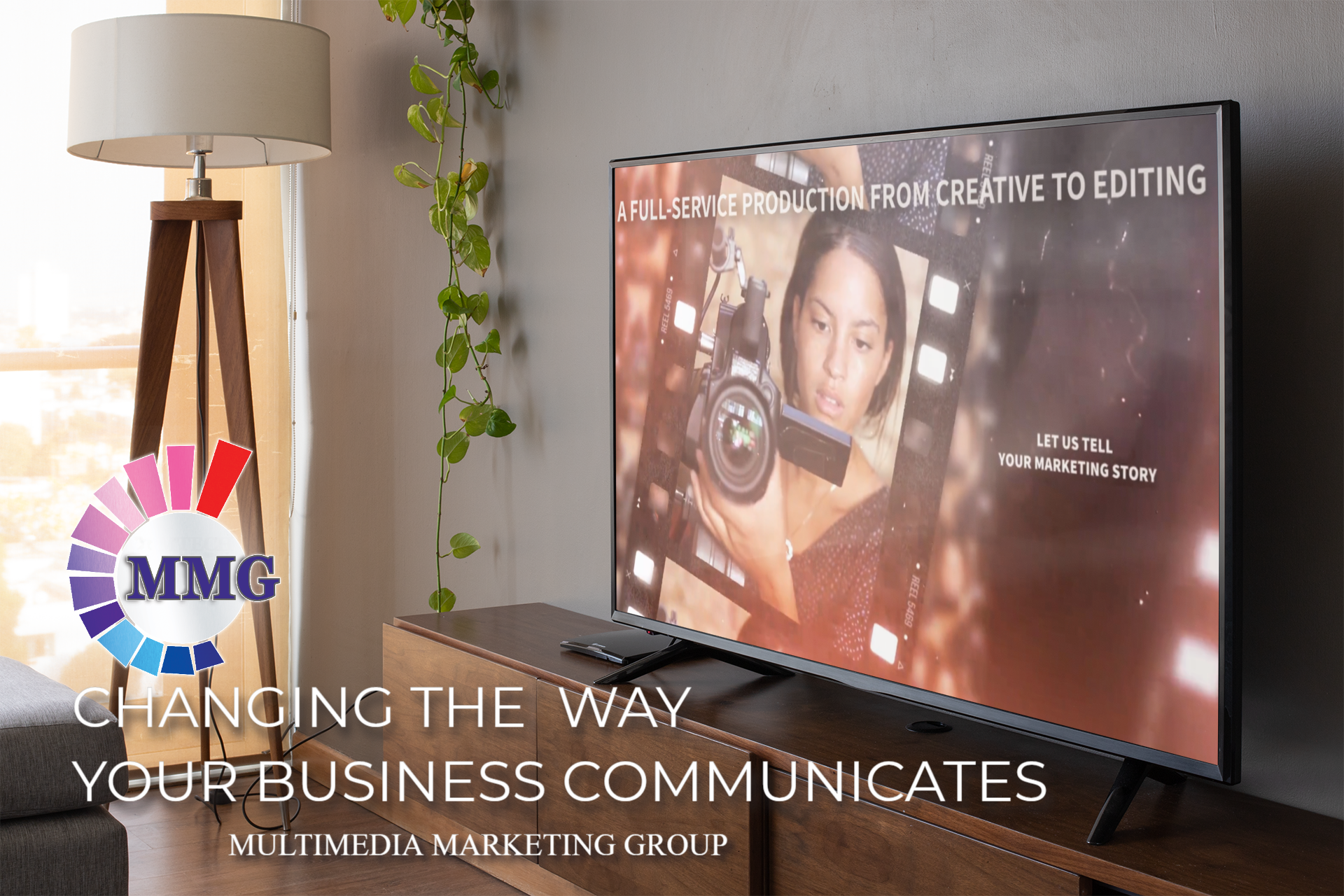
CHANGING THE WAY YOUR BUSINESS COMMUNICATES
AN EDUCATIONAL WHITE PAPER
ABSTRACT: THE PRELUDE TO WHAT IS ACTUALLY WORKING, OR NOT
This Educational White Paper is meant to educate readers and help them to understand and help solve the issues of traditional content creation. You may want to keep this white paper and refer to it later as a guide. Read time: Approximately 10 minutes.
Most marketing content you may discover on the internet is or has been debated by someone, somewhere, at some time. Even when the subject you read or hear is presented as a simple fact, it may actually be one person’s interpretation of a set of information. This paper intends to separate from authors who see marketing content assignments as the mere accumulation of fact and detail.
It is also the intention of the author to provide the underlining ‘why’ of using video as a content communication tool, not the tasks or techniques of creating and producing a filmed presentation. There are a plethora of internet articles about the shooting, lighting, directing, and editing. However, very few, if any, will address the subject set forth here. The insight provided is targeted to why and how to lead and manage the outcome. The paper will provide you with evidence appropriate to each claim. We encourage you to do your own research to find additional articles and publications related to the five steps of the filmed presentation delineated in the paper that will help you speciate and evolve your thinking on the production journey.
video as a content communication tool, not the tasks or techniques of creating and producing a filmed presentation. There are a plethora of internet articles about the shooting, lighting, directing, and editing. However, very few, if any, will address the subject set forth here. The insight provided is targeted to why and how to lead and manage the outcome. The paper will provide you with evidence appropriate to each claim. We encourage you to do your own research to find additional articles and publications related to the five steps of the filmed presentation delineated in the paper that will help you speciate and evolve your thinking on the production journey.
The five steps outlined in the following White Paper to are based on change. Everyone has something they want to change. You might be trying to get consumers, customers, or clients to buy a new product, get prospects to use your service, or get your clients to do things differently and perceive your organization in a new light.
WHY TRADITIONAL CONTENT CREATION IS NOT WORKING
To trust branded content is the ability to create content that entertains, excites, and inspires. The sad news is that you now have more responsibility and accountability more than ever to give the target audience that StoryBrand content. Are you Doing the Same Thing Over and Over Again?
Albert Einstein is broadly credited with saying, “The definition of insanity is doing the same thing over and over again but expecting different results.” Over 70% of all businesses use content branded marketing strategies; however, according to many studies, including the Content Marketing Institute, only 5% of the Business to Consumer business marketers believe their content marketing efforts to be “very effective.”
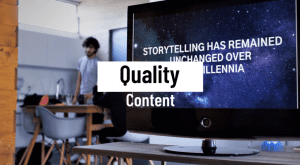 Simply put, the way business has historically created, designed, and produced the communication for their branded content marketing may not be the correct way because it has produced little or no results, a fundamental disconnect, and a cut-off between what business is actually doing and what is actually working.
Simply put, the way business has historically created, designed, and produced the communication for their branded content marketing may not be the correct way because it has produced little or no results, a fundamental disconnect, and a cut-off between what business is actually doing and what is actually working.
So, with this thought in mind and since this traditional content creation is not working, what is the right way? How does it work for you and your business? Are you currently making the most of your branded content across your social media platforms? With online videos accounting for more than 82% of all consumer internet traffic by 2022, this is a worthy investment to make. You may think of the video, which is a filmed presentation created in a variety of genres, treatments, and styles, as being expensive and time-consuming to produce; however, in a recent study of video, the 2021 VIDYARD Benchmark Report, Over 70% of marketing leaders maintain ‘that video makes more conversions than any other branded content.
QUALITATIVE AND QUANTITATIVE RESULTS
The following Empirical research is based on observed and measured phenomena and derives knowledge from actual experience rather than from theory or belief. For example, Wyzowl Research reported that 93% of marketers who use video say that it is an integral part of their marketing strategy, increasing from 92% in 2020, making this the highest percentage of any year since 2015. The data thus gathered may be compared against a theory or hypothesis of marketing content, but the results are still based on real-life experience.
say that it is an integral part of their marketing strategy, increasing from 92% in 2020, making this the highest percentage of any year since 2015. The data thus gathered may be compared against a theory or hypothesis of marketing content, but the results are still based on real-life experience.
- Companies that use film presentations on their websites have 41% more web traffic from searches than website sites that don’t use video at all.
- Video drives organic traffic up by 157%.
- Embedded video on landing pages increases conversions by 80%.
- Diode Digital recently found that online video is a 600% more effective marketing tool than print and direct mail combined.
- Animoto surveys marketers and consumers to help businesses stay at the forefront of shifting trends on social media, and they have found that 93% of brands got a new customer because of a video on social media.
WHY CONSUMER BEHAVIOR IS SALIENT
As Empirical research has demonstrated, messages communicated in a filmed presentation are far more engrossing. Furthermore, communication takes the lead to a much higher retention rate. 90% of information transmitted to the brain is visual, and visuals are processed 60,000 times faster in the brain than text, according to Pop Video. The landmark textbook, A Primer on Communication Studies, states, “We tend to pay attention to salient information. Salience is the degree to which something attracts our attention in a particular context. The thing attracting our attention can be abstract, like a concept, or concrete, like an object.”
engrossing. Furthermore, communication takes the lead to a much higher retention rate. 90% of information transmitted to the brain is visual, and visuals are processed 60,000 times faster in the brain than text, according to Pop Video. The landmark textbook, A Primer on Communication Studies, states, “We tend to pay attention to salient information. Salience is the degree to which something attracts our attention in a particular context. The thing attracting our attention can be abstract, like a concept, or concrete, like an object.”
The field of neuromarketing, sometimes known as consumer neuroscience, studies the brain to predict and potentially even manipulate consumer behavior and decision making. Harvard Business Review reports that Nobel Laureate Francis Crick called it the astonishing hypothesis: the idea that all human feelings, thoughts, and actions—even consciousness itself—are just the products of neural activity in the brain. Neuroscience focuses on sensory processing by how the consumers get informed and how they turn them into behavioral responses, and transmedia storytelling has the opportunities to exceed customer engagement. Understanding human behavior and how we react to things is a massive part of any marketer’s job, so when you know what a person wants or how they perceive things, it makes it easier to create a narrative that will be memorable.
THE PRODUCTION BRIEF
A filmed production brief is a synopsis of the knowledge you will compile based on the five steps that production will take. The investment of time will serve as a guide throughout the production process to keep all your stakeholders on-task and on track. It will cover such items as your video objectives, target audience, core message, budget, deadline, implementation, and distribution of the final product. The brief will aid you in seeing what success looks like long before the performance stage of the project’s completion.
GIGO
In Harking back to the French phrase that literally means like this, like that. Comme ci, comme ça, means so-so, or neither good nor bad. Filming a production is more than simply pressing the record button on a digital video camera or grabbing a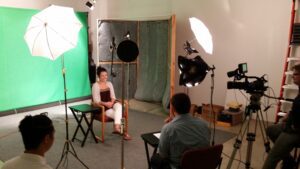 smartphone. They genuinely have a place in communication; however, the outcome is based on the age-old concept of GIGO (garbage in, garbage out.) It is a concept familiar to computer science and mathematics: “the quality of the input determines the quality of output. So, if a mathematical equation is improperly stated, the answer is unlikely to be correct. Similarly, if incorrect data is input to a program, the output is unlikely to be informative.” And the same holds true when filming a production.
smartphone. They genuinely have a place in communication; however, the outcome is based on the age-old concept of GIGO (garbage in, garbage out.) It is a concept familiar to computer science and mathematics: “the quality of the input determines the quality of output. So, if a mathematical equation is improperly stated, the answer is unlikely to be correct. Similarly, if incorrect data is input to a program, the output is unlikely to be informative.” And the same holds true when filming a production.
THE PLANNED ALTERNATIVE
The process of creating a filmed presentation from concept to completion consists of five phases:
Pre-Planning, Pre-Production, Production, Post-Production, and Implementing/Distribution.
CREATIVE COLLABORATION STARTS WITH PRE-PLANNING THE IDEA
Step One:
The most vital element of a successful filmed presentation is the consideration of what will grab, hold, and convert your viewers’ attention. From a marketing content perspective, this means studying your target audience’s needs, context, and motivations. Planning such as this is part of the pre-planning stage which includes this primary research. However, while being the most helpful element of pre-planning, it is often the most overlooked. The sociological perspective is of paramount importance to understand how people’s social and psychological experiences underlie their behaviors and people’s lives. Why people do what people do, is the underbelly of your story, branded content, and the visual syntax of what will be created and produced. This perspective will also give you an overall look, the mood, and the outcome of the final filmed presentation. So, you plan to develop great mindful stories. The first and foremost series of questions you need to ask yourself is, ‘Just who is my audience? What do they do, think, feel, eat, love, hate, and ‘like’? And yes, what do they think about you?’ As the old saying goes, knowledge is power. And both knowledge and power are enthralling and empowering.
content, and the visual syntax of what will be created and produced. This perspective will also give you an overall look, the mood, and the outcome of the final filmed presentation. So, you plan to develop great mindful stories. The first and foremost series of questions you need to ask yourself is, ‘Just who is my audience? What do they do, think, feel, eat, love, hate, and ‘like’? And yes, what do they think about you?’ As the old saying goes, knowledge is power. And both knowledge and power are enthralling and empowering.
As you have seen firsthand, today, we are in an era where social media platforms have grown more crowded than ever, and users are overwhelmed and inundated by the flood of digital content in their feeds. To become distinguishable and accomplish this digital flood, we all must expand the communication toolbox. We must look to the rudiments of human experience. This type of StoryBrand content brings human stories to life. “We, as a species, are addicted to story. Even when the body goes to sleep, the mind stays up all night, telling itself stories,” states Jonathan Gottschall, in his landmark book The Storytelling Animal: How Stories Make Us Human. No matter what style of filmed presentation you desire to create, please remember just one thing in your pre-planning process, our entire species is hardwired for telling and enjoying stories. By creating a more substantial, more earnest presence, you cultivate an audience that will be more receptive to all your marketing now and in the future. So, when you want to be remembered, motivate your audience, teach about your product or service, or present the ‘good idea,’ remember, start with a story!
This action will help you devise a plan to communicate with compelling stories that resonate with your marketplace. Evaluate your prospective buyer’s journey, including their key concerns and questions you will need to answer that will motivate your audience’s behavior along that journey. All the content that is planned to be created must have the intent to be viewed by your target audience, engage them, have them share your content, and cause an increase in market share, which is commonly called conversions.
THE PRE-PRODUCTION STAGE IS THE OPPORTUNITY TO PLAN YOUR OUTCOME
Step Two:
Now to create your plan of action is the pre-production process, which is the step you use to craft your human stories for your branded content. While a filmed presentation may be considered magical, they don’t come out of thin air. The pre-production stage is the opportunity to plan your outcome.
Pre-production is the process of assembling everything you need well  before actual production commences and is an important phase of the filmmaking process to create the story you need to tell. This vital stage of the film presentation is where we solidify all the project details before producing content. The plan even includes the agenda for the implementation and distribution of your project. One significant point to consider is that pre-production will save you time and money. Thus, you are less likely to waste precious resources. Detailing the schedule is also integral to a smooth production process, as it gives everyone the idea and understanding of where the team will spend time to be allocated for efficient production.
before actual production commences and is an important phase of the filmmaking process to create the story you need to tell. This vital stage of the film presentation is where we solidify all the project details before producing content. The plan even includes the agenda for the implementation and distribution of your project. One significant point to consider is that pre-production will save you time and money. Thus, you are less likely to waste precious resources. Detailing the schedule is also integral to a smooth production process, as it gives everyone the idea and understanding of where the team will spend time to be allocated for efficient production.
The highlight of the phase explained here, is simplified and in reality, it is a complex, multifaceted pre-production process. Often these steps in the process will be done by the team simultaneously and in an assortment of orders. But remember that organization, confidence, and preparation in this stage will get you through any of the pre-production hurdles and tell the story you’ve always wanted to tell.
COMMENCEMENT OF THE FILMED PRODUCTION
Step Three:
Production begins when the writing of a draft of the script is completed, your target audience is identified, all the financial logistics of the project are in place. Here is the 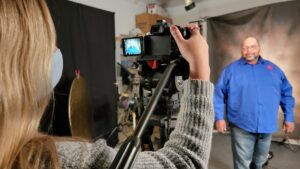 opportunity to bring the story to life at this stage. All the production values that will be created and communicated to your prospective audience are in this phase. Our brains gather emotional data in every human interaction based on facial expressions, tone of voice, and other subconscious clues such as color, sound, setting, and style. According to Ken Burns, Director extraordinaire, “Cinematography comprises all on-screen visual elements, including lighting, framing, composition, camera motion, camera angles, film selection, lens choices, depth of field, zoom, focus, color, exposure, and filtration.” This collective data informs our assumptions and affects the experience of the prospective viewer. Among the storytelling elements at your disposal, the one most integrally linked to filmmaking is the cinematography. How the camera is placed and why and where it will move are all considered part of this step. By preparing in advance of this stage, you now have the total freedom to be highly collaborative. This advantage is due to the pre-planning and pre-production. It now provides you an opportunity to collaborate, create and build something together as a unified team.
opportunity to bring the story to life at this stage. All the production values that will be created and communicated to your prospective audience are in this phase. Our brains gather emotional data in every human interaction based on facial expressions, tone of voice, and other subconscious clues such as color, sound, setting, and style. According to Ken Burns, Director extraordinaire, “Cinematography comprises all on-screen visual elements, including lighting, framing, composition, camera motion, camera angles, film selection, lens choices, depth of field, zoom, focus, color, exposure, and filtration.” This collective data informs our assumptions and affects the experience of the prospective viewer. Among the storytelling elements at your disposal, the one most integrally linked to filmmaking is the cinematography. How the camera is placed and why and where it will move are all considered part of this step. By preparing in advance of this stage, you now have the total freedom to be highly collaborative. This advantage is due to the pre-planning and pre-production. It now provides you an opportunity to collaborate, create and build something together as a unified team.
STIMULATING THE COGNITIVE PROCESS IN POST-PRODUCTION
Step Four:
Post-production is about punctuation, assembly, and triggers. The concepts of a trigger can include sight, sound, or anything to create an environment that will activate something else in the viewer’s mind. The goal here is to stimulate the cognitive process.
Malcolm Gladwell’s book, aptly named The Tipping Point, explores the science behind viral trends in business, marketing, and human behavior. “The tipping point is that magic moment when an idea, trend, or social behavior crosses a threshold, tips, and spreads like wildfire,” states Malcolm Cladwell. The book does not claim to produce new research. What the author does is present interesting and validated findings in a way that organizes them for potential application to a given range of problems.
given range of problems.
According to Wikipedia, this process refers to “the mental action or process of acquiring knowledge and understanding through thought, experience, and the senses,” according to Wikipedia.
In an unprecedented 2014, a two-night Academy event, “Movies in Your Brain: The Science of Cinematic Perception,” brought together filmmakers and cognitive scientists to explore how viewers process images, events, and stories experienced on the silver screen.
The landmark event brought together some of the most recognized filmmakers working today and some of the most brilliant and inspiring cognitive scientists to orchestrate the discussion on viewer perception.
For the first time, the Event provided increased insight into what is going on in the brain of viewers while watching a movie. The outcome was a provocation for delving into the extremes of cinematic experience and the higher understanding of neuromarketing today.
IMPLEMENTING AND THE DISTRIBUTING OF YOUR FILMED PRESENTATION
Step 5:
The last and most crucial stage in film production is implementation and distribution. It does not matter how good your filmed presentation is. If it lacks this part of your plan, it will not enjoy the success you anticipated in your original production brief. The marketing activities  and supporting marketing programs and the way the final filmed production is integrated into them are what we here at Multimedia Marketing Group affectionately call The science of Transmedia storytelling or, in this case, Transmedia Marketing. Remember, this is about managing change, from the small to the monumental. Prepare the organization, prepare anyone and everyone. Be the turtle in the race and be methodical but strategic in how you approach your marketplace. All modifications and changes take time. What’s essential is that you get everyone on the same page. Positioning and preparing distribution takes the same due diligence, time, energy, and budget as developing your branded content strategy. Remember, implanting change in the way you distribute the final product will change the trajectory of your business.
and supporting marketing programs and the way the final filmed production is integrated into them are what we here at Multimedia Marketing Group affectionately call The science of Transmedia storytelling or, in this case, Transmedia Marketing. Remember, this is about managing change, from the small to the monumental. Prepare the organization, prepare anyone and everyone. Be the turtle in the race and be methodical but strategic in how you approach your marketplace. All modifications and changes take time. What’s essential is that you get everyone on the same page. Positioning and preparing distribution takes the same due diligence, time, energy, and budget as developing your branded content strategy. Remember, implanting change in the way you distribute the final product will change the trajectory of your business.
YOUR FINAL TAKEAWAY – CREATIVE COLLABORATION
The four pillars of a brand are your key factors when creating and building your brand content for a filmed presentation. They provide the starting point for creative collaboration. These four pillars are the place to start from which to launch not only your branded content story but your whole marketing and communication strategy. The strategy is audience-centric and is the four intrinsic values that hold your brand reputation up. Differentiation, Relevance, Esteem, and Understanding work with your communication strategy’s five components: messages, audience, channel, cadence, and measurement. This simple thinking hypothesis perhaps was once stated best by Adam Frank, a University of Rochester astrophysicist, “you can’t know until you look, and you can’t look until you know what to look for.”
THE “COLLECTIVE BRAIN”
By bringing the four pillars together with your communication strategy, your StoryBrand will stimulate their interest in the story you tell. One of the only reasons people are reaching out to your business, looking at your social media platforms, or landing on your website is merely put; they have a problem or difficulty. It will help resolve it by changing the way your business communicates with the public you serve. The catch is that each individual in the marketplace has their own unique perception. Your brand is not yours. Instead, it belongs to the public, your clients, employees, competitors, even friends and family. Their perception is formed by various influences, including their past experiences with your company specifically or perhaps what Terry Irwin, Director of the Transition Design Institute, Carnegie Mellon University, describes as the “collective brain.”
It’s difficult, if not impossible, to think of an aspect of life where marketing is not involved. Storytelling then employs the scientific method — stating the question, offering a theory, and then constructing rigorous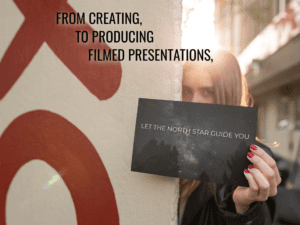 models or pillars of the story to test the hypothesis. Transmedia Storytelling then applies the understanding gleaned through research to create evidence-based strategies that solve human problems and improve people’s lives. Through Transmedia Storytelling, the filmed presentation can be reached by so many more individuals on and on so many platforms, including websites, social media platforms, radio, and Television. One final thought to leave you with for the upcoming journey you will take.
models or pillars of the story to test the hypothesis. Transmedia Storytelling then applies the understanding gleaned through research to create evidence-based strategies that solve human problems and improve people’s lives. Through Transmedia Storytelling, the filmed presentation can be reached by so many more individuals on and on so many platforms, including websites, social media platforms, radio, and Television. One final thought to leave you with for the upcoming journey you will take.
When it comes to creating, conceptualizing, producing, and implementing your filmed presentation, have a specific message and objective. Like the North Star, aka Polaris, which is famous for holding nearly still in our sky while the entire northern sky moves around it, now let you’re the true North Star guide you. Happy sailing!!
ABOUT THE AUTHOR
JOSEPH M. ARCO,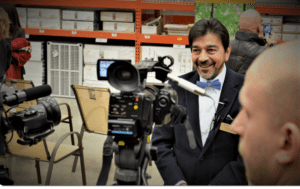 PRESIDENT
PRESIDENT
Distinguished 20+ year career introducing Marketing strategies to drive growth within intensively competitive markets, expert in creating the vision, identifying opportunities, creating high-quality products and services, delivering strong revenues and profits, and positioning start-up and existing businesses for sustainable growth.
See more at LinkedIn https://www.linkedin.com/in/joseph-arco-2353b414/
Categories
Recent Posts
- Maximize Your Reach: Essential Email Marketing Dos and Don’ts for Success July 9, 2024
- Social Media Day 2024 June 30, 2024
- Navigating the World of Social Media Advertising June 20, 2024
- The Power of Visual Content in Marketing April 8, 2024
- Hip Hopper Alert: Easter Bunny Steals the Show with Sunglasses Stunt March 31, 2024
- The Super Bowl Ads 2024 February 12, 2024
- Serving Our Client’s Social Media Platforms Branded Content February 5, 2024
- Days of Future Past January 31, 2024
- The Art of Blending Human Intuition and Data-Driven Insights January 31, 2024
- Beyond Intuition January 30, 2024
Recent Comments